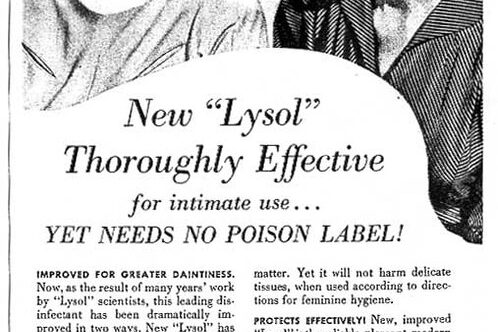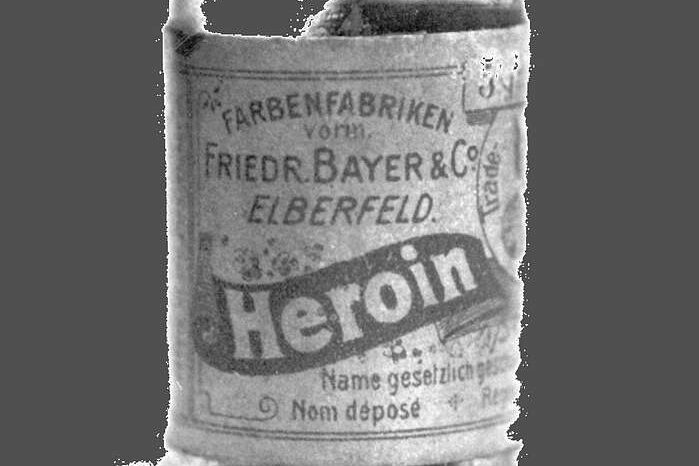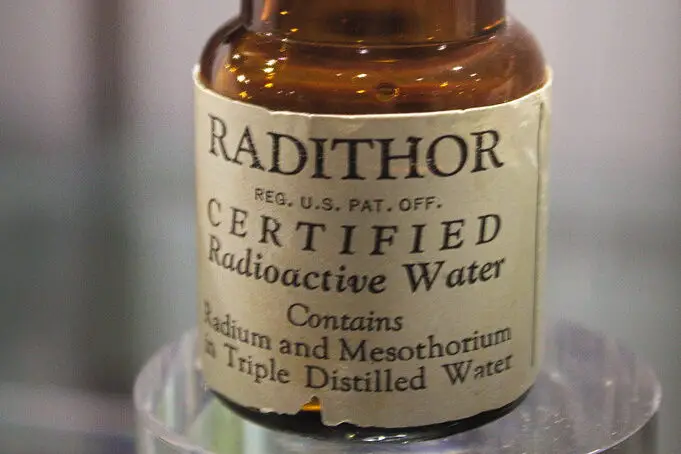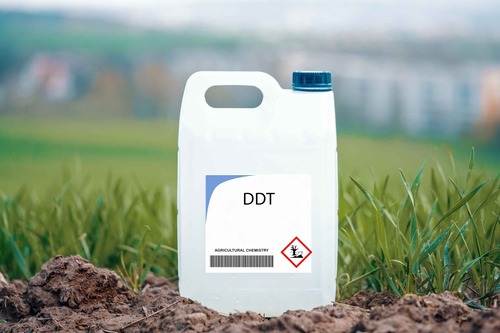1. Lysol Disinfectant as a Feminine Hygiene Product

It’s hard to believe today, but for decades Lysol wasn’t just marketed for cleaning toilets or kitchen counters. In the early-to-mid 20th century, it was advertised to women as a feminine hygiene product, with vague warnings that personal “neglect” could cost them their husbands. These ads played heavily on fear and shame, implying that a little Lysol could save a marriage, never mind the fact that the chemical formula was way too harsh for such delicate use.
Many grandmothers grew up seeing these kinds of ads in magazines and assumed the product was doctor-approved. In reality, it was linked to irritation, infections, and even poisoning. But back then, if an ad promised a better home life or a happier husband, people trusted it. Medical knowledge wasn’t as widespread, and companies used that gap to push products in wildly unsafe ways. Lysol eventually dropped those claims, but the damage was done. And for some, those early beliefs stuck around much longer than they should have.
2. Lucky Strike Cigarettes for a Healthy Throat

There was a time when cigarettes were not only socially acceptable, but actively recommended by doctors—at least according to the ads. Lucky Strike famously claimed that their smokes were “less irritating” and even promoted them as a remedy to soothe the throat. Some ads had smiling physicians in white coats assuring readers that a few puffs could help with coughs, which feels like satire now but was taken completely seriously back then.
Our grandparents didn’t think they were doing anything dangerous by smoking or offering cigarettes to guests. The ads gave the illusion of scientific backing, and that was enough for many to trust the product completely. Smoking was everywhere, from movies to airplanes to restaurants. When a respected voice in a magazine or radio spot said it was okay, why question it? It wasn’t until decades later that the link between cigarettes and serious health issues became undeniable. But by then, entire generations were hooked.
3. Bayer Heroin for Coughs

In the early 1900s, Bayer—yes, the same company known for aspirin—sold heroin over the counter as a cough suppressant. Ads touted it as a gentle remedy for everything from sore throats to insomnia, even for children. Parents were told it was safer than morphine, and the ads featured smiling families and reassuring copy about scientific progress.
It’s jarring now to think about heroin being sold as casually as cold medicine, but it was marketed with so much confidence that people didn’t hesitate. There was no FDA oversight like we have today, and most people didn’t know what addiction looked like until it was too late. Many grandparents might have grown up in homes where these kinds of remedies were stored right next to the bandages and aspirin. It took years of addiction and medical backlash before heroin was pulled from shelves. But for a while, it was just another trusted brand.
4. Radithor Radioactive Water

In the 1920s and ‘30s, Radithor was advertised as a miracle health tonic—literally radioactive water that promised to boost energy, cure impotence, and bring back vitality. It came in tiny bottles with sleek labels and a big promise: drink this and you’ll feel like a new person. It sounded futuristic and scientific, which made it easy for people to believe, especially when popular athletes and businessmen publicly endorsed it.
What the ads didn’t mention was that repeated use could destroy your body from the inside out. One high-profile case involved a wealthy socialite whose jaw literally disintegrated after years of daily use. But before those stories hit the news, many everyday people sipped it daily, trusting that the ads wouldn’t lie. Our grandparents weren’t naïve—they just didn’t have access to the kind of safety data we expect today. They believed in progress and trusted packaging that looked official.
5. Carter’s Little Liver Pills

For decades, Carter’s Little Liver Pills were sold as a cure-all for everything from fatigue to headaches to bad moods. The ads claimed that if you were feeling off, it was probably because your liver was “sluggish”—a completely made-up diagnosis with no medical backing. But the language was convincing, and the pills flew off shelves across the country. They didn’t actually treat the liver, but that didn’t stop generations from taking them religiously.
These pills were so popular that even into the 1950s, they were a common household item, and many grandparents swore by them. The brand leaned hard on pseudo-science and exaggerated testimonials, which worked wonders in an era when people put their faith in printed words. It wasn’t just about relief—it was about control. If you could take a tiny pill and feel better, why wouldn’t you? Never mind that it was mostly just a laxative.
6. DDT for a Cleaner Home

When DDT was first introduced, it was hailed as a breakthrough for pest control. Ads showed moms spraying it freely in kitchens, nurseries, and even directly onto food prep surfaces. There were posters showing kids playing on lawns as DDT clouds hovered in the background like protective mist. It was sold as the modern homemaker’s best friend, able to keep the house safe from bugs and disease with just a few spritzes.
Our grandparents didn’t think twice about spraying it around the house or garden. The product looked official, and government agencies even endorsed its use for a while. It wasn’t until years later that scientists discovered how toxic and persistent DDT was, not just for insects but for humans and the environment. By then, the damage was hard to undo. But in those early years, if a product said it would make life cleaner and easier, people believed it.
